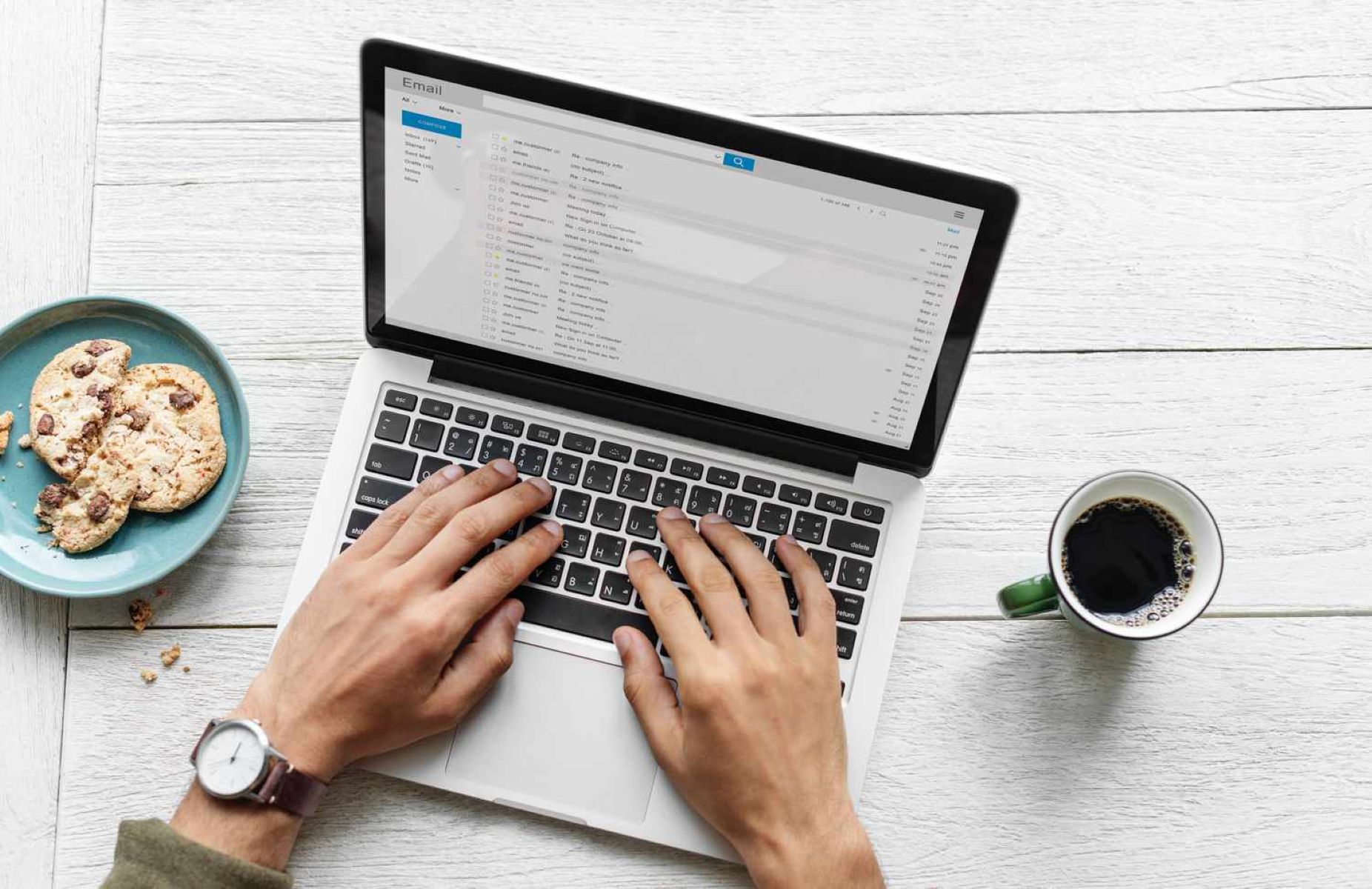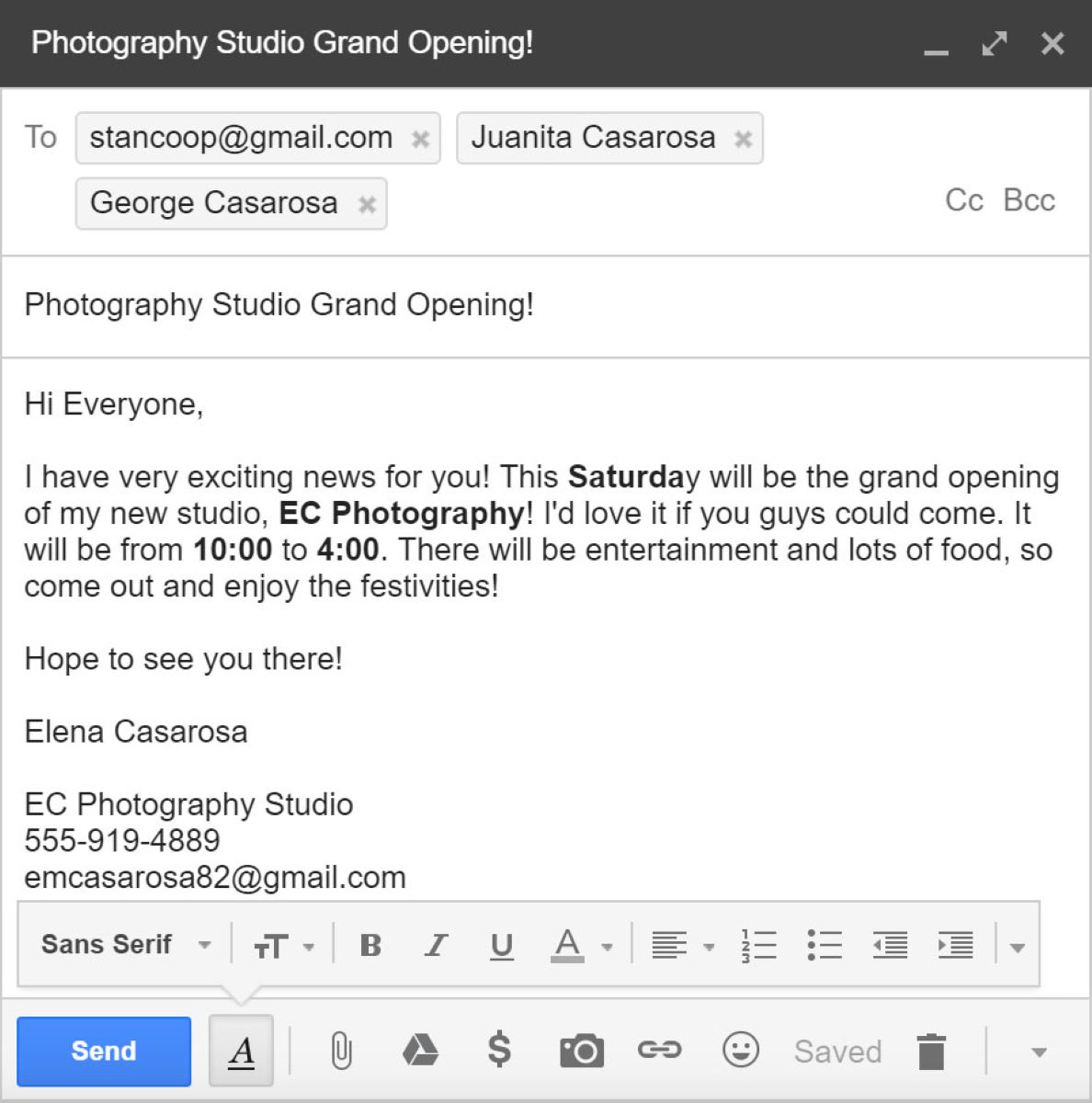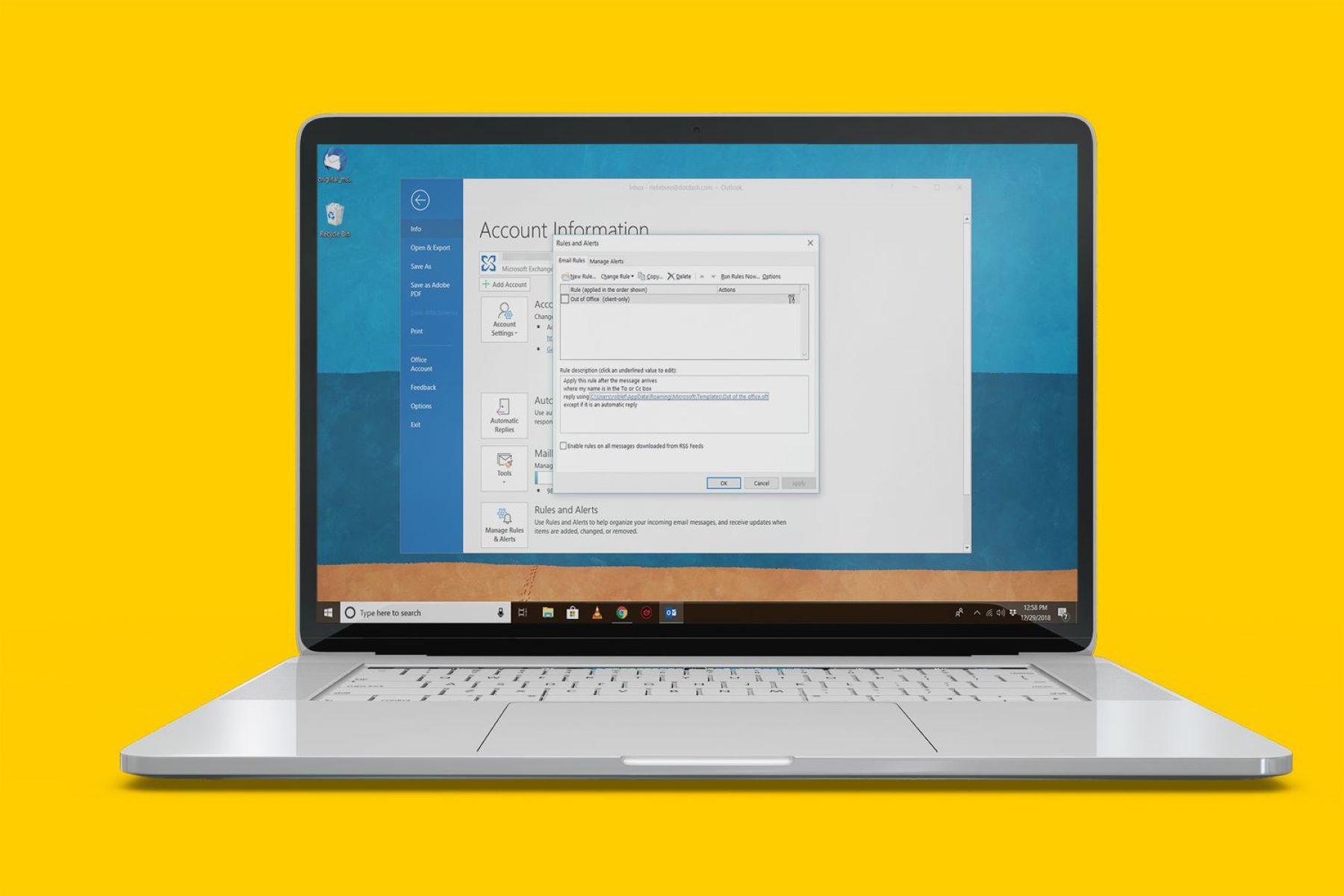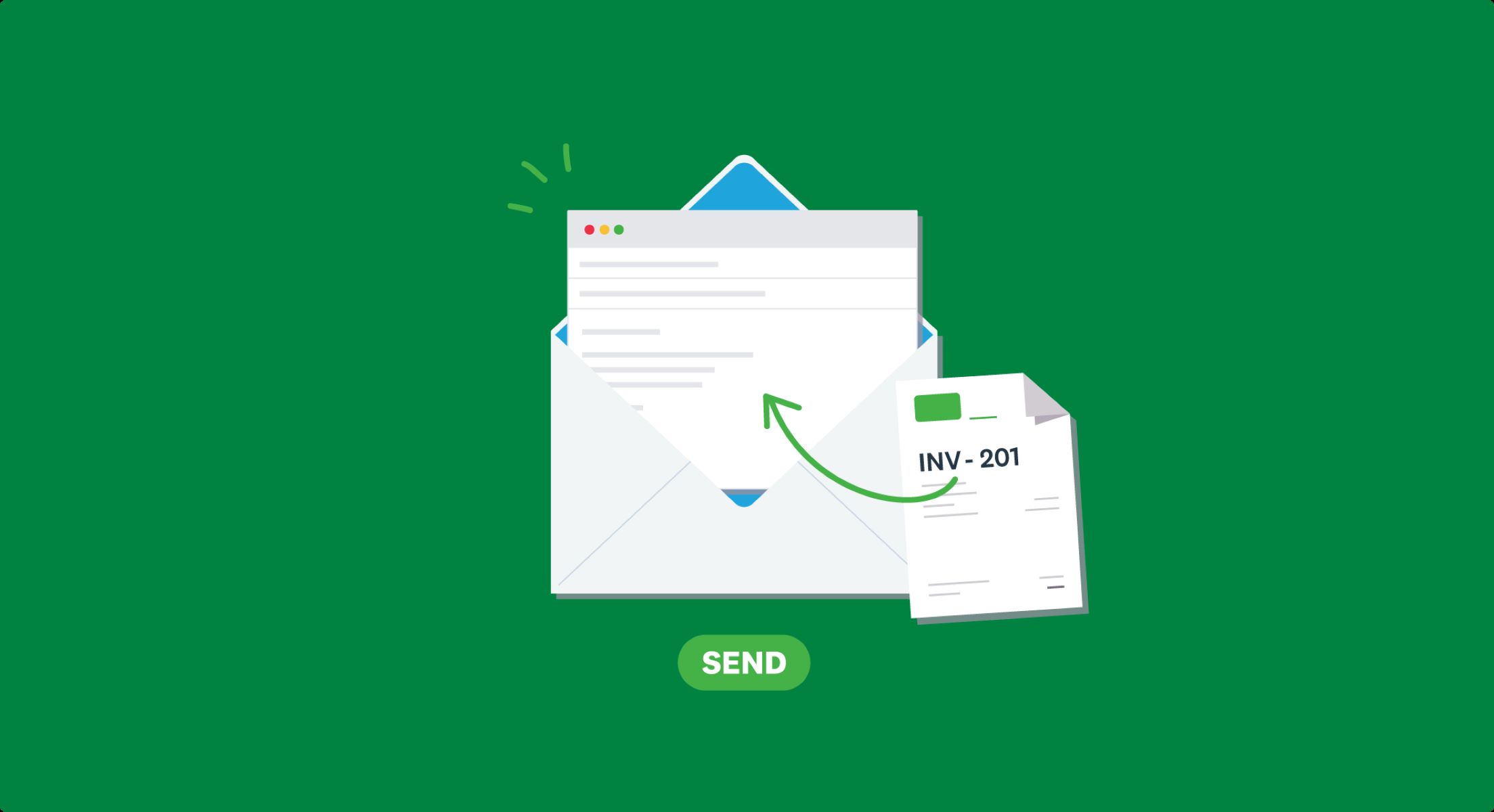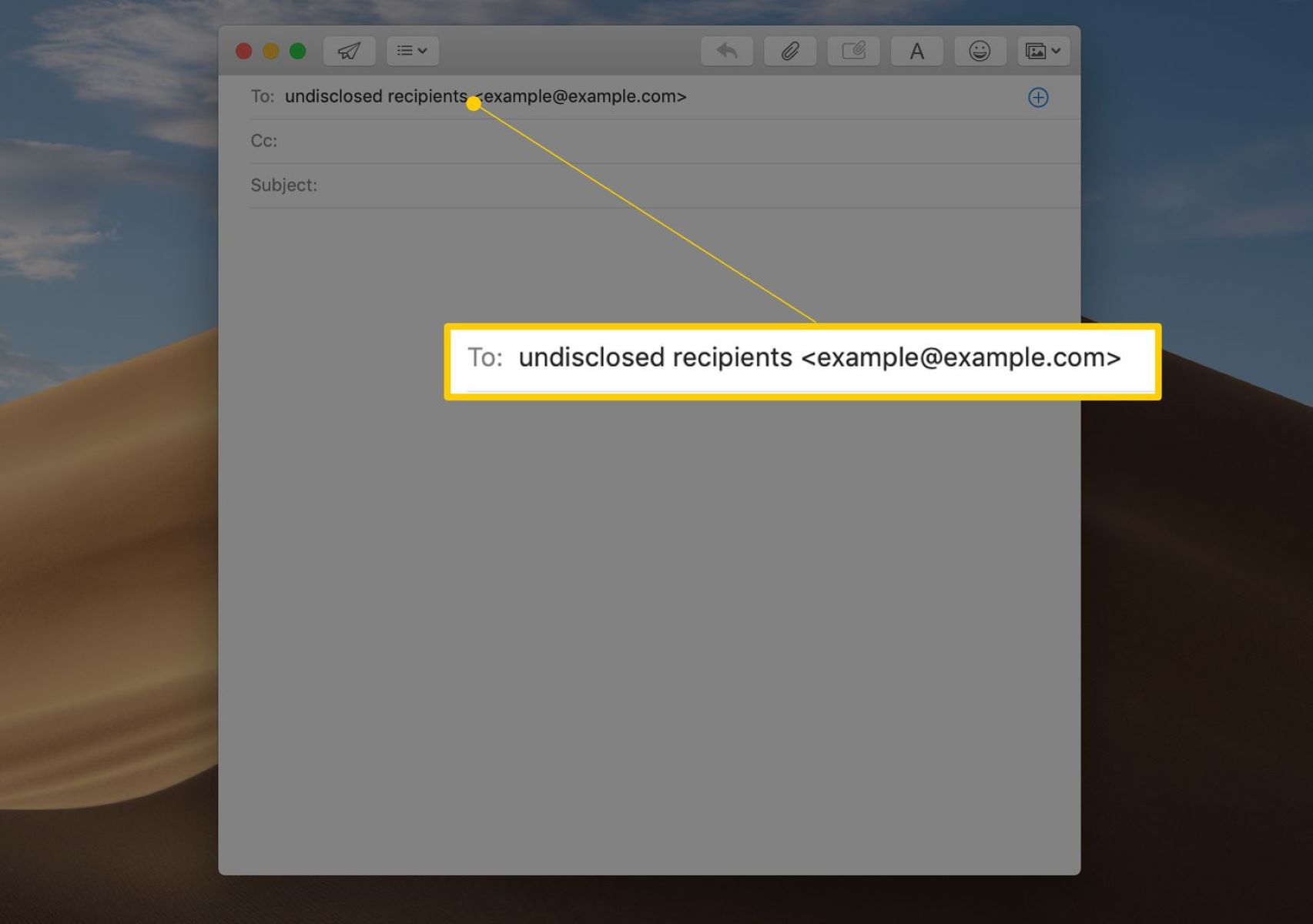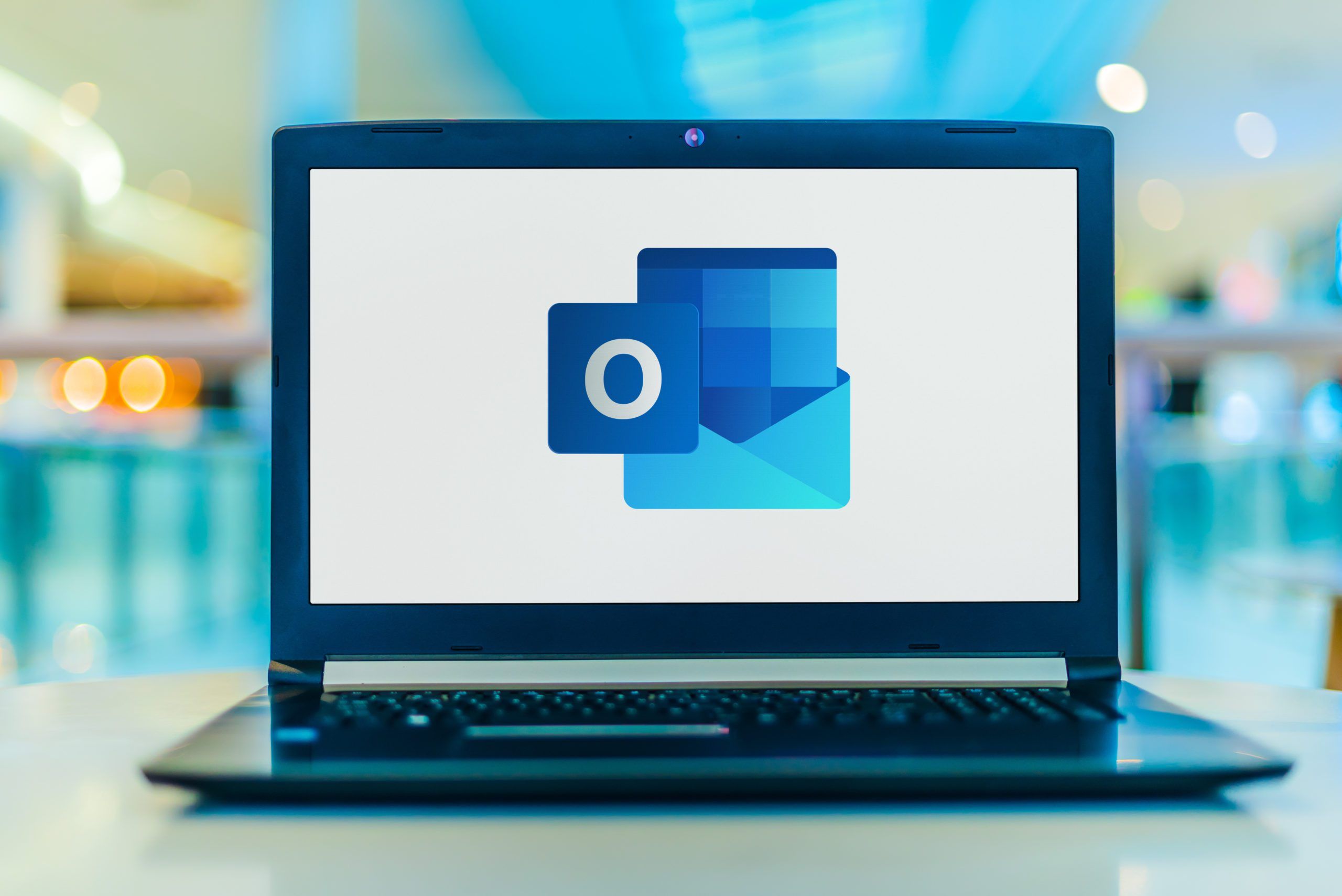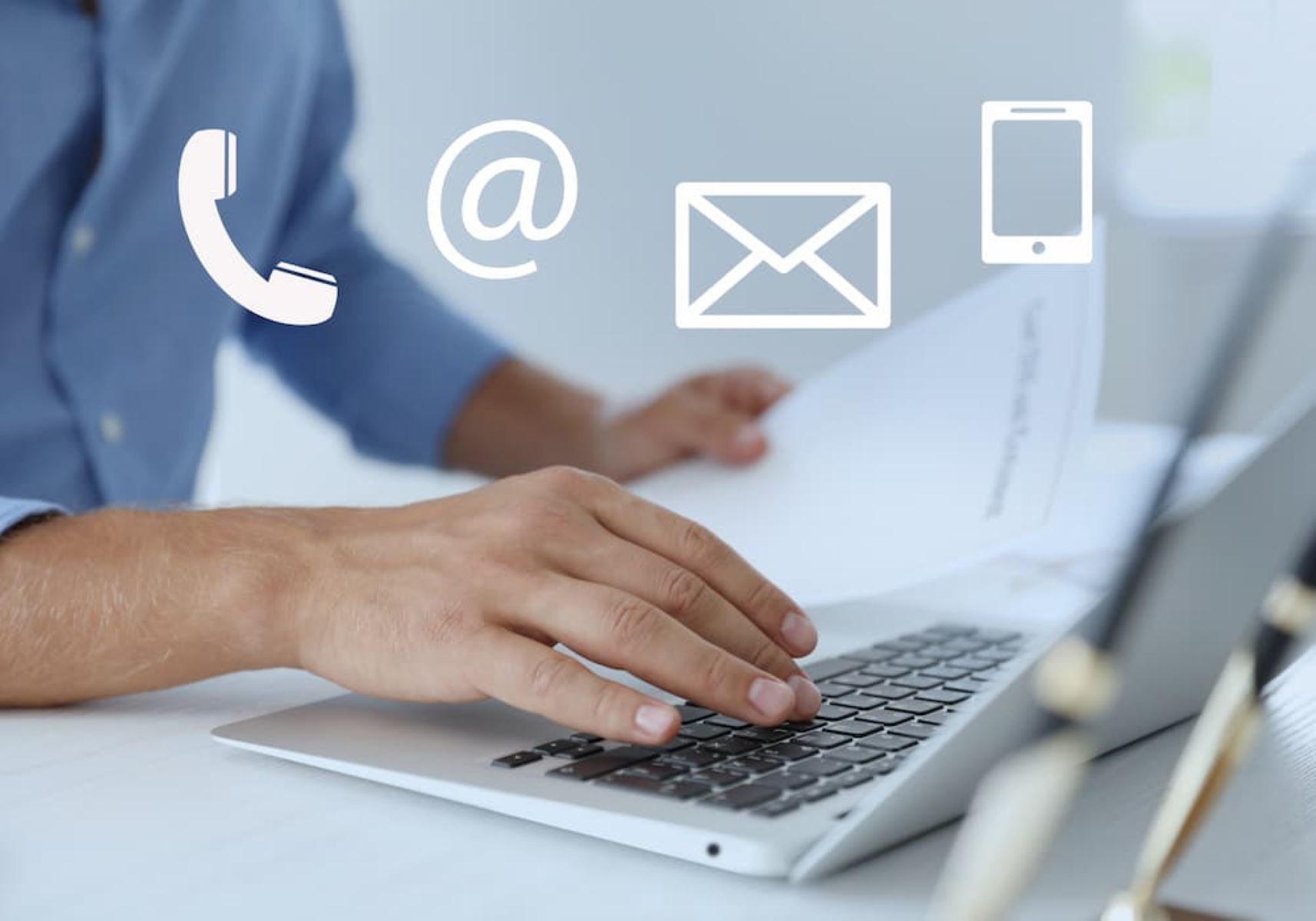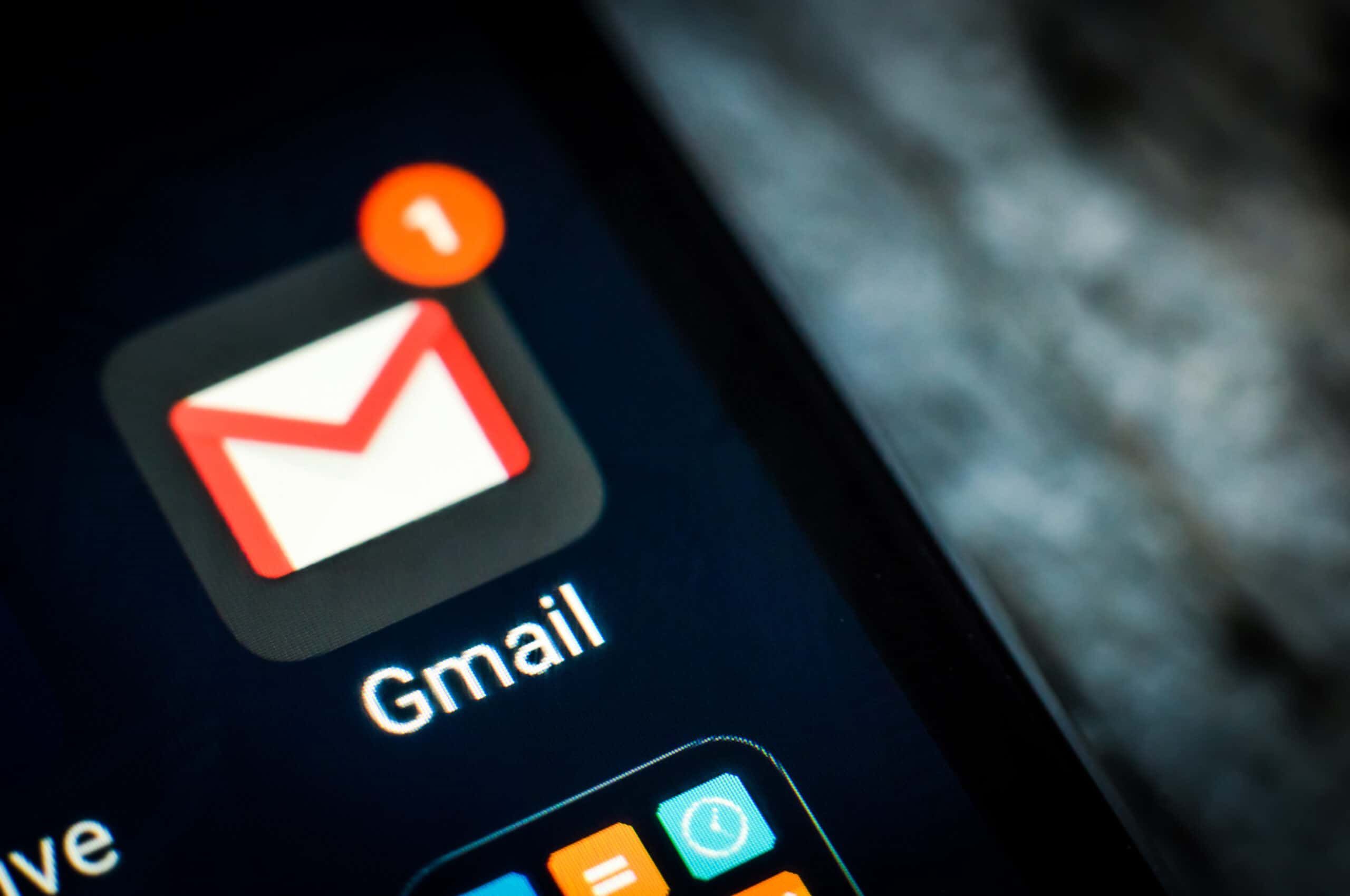Introduction
Welcome to the world of professional email communication! In today’s fast-paced digital age, sending emails has become an essential means of communication, especially in the business world. Whether you are reaching out to a potential client, networking with industry professionals, or corresponding with colleagues, it is crucial to master the art of sending professional emails.
Why is this important, you may ask? Well, your email etiquette and professionalism reflect not only on you but also on your organization. Sending well-written and polished emails can make a significant impact on how you are perceived by others, establish your credibility, and even open doors to new opportunities.
In this article, we will guide you through the steps to send professional emails that leave a lasting impression. From choosing the right email address to crafting an effective subject line and using proper formatting, we have got you covered. So, let’s dive in and discover the key elements to consider when sending professional emails.
Choose A Professional Email Address:
One of the first steps towards sending a professional email is to have a suitable email address. Ideally, your email address should reflect your name or your organization’s name. Avoid using nicknames, personal jokes, or unprofessional handles. A professional email address gives a sense of credibility and ensures that your recipient takes you seriously.
Use A Clear And Concise Subject Line:
The subject line is the first thing your recipient sees, so it is crucial to make it concise and to the point. A clear subject line provides context and helps the recipient understand the purpose of your email. Avoid vague subject lines such as “Hello” or “Important” and instead, provide a brief summary of the email’s content.
Start With A Formal Greeting:
When composing a professional email, it’s essential to begin with a formal greeting. Use the recipient’s name preceded by a salutation like “Dear” or “Hello.” If you are unsure of their preferred title or gender, it is appropriate to use their full name without a specific title. Starting your email with a polite greeting sets a positive tone for the rest of the message.
Be Mindful Of Your Tone And Language:
Writing in a professional tone is crucial when sending emails. Be mindful of using appropriate language and avoid using slang or colloquialisms. Keep your tone friendly yet formal, maintaining a level of professionalism throughout the email. This will ensure that your message is received in the manner you intend.
Keep It Brief And Organized:
Time is valuable, so keep your emails concise and to the point. Avoid unnecessary information and focus on the key purpose of your email. Structure your email into short paragraphs or use bullet points to make it easy to read and understand. Organizing your thoughts will help your recipient quickly grasp the message you are trying to convey.
Use Proper Formatting And Punctuation:
Proper formatting and punctuation play a vital role in the professionalism of your email. Make use of appropriate fonts and font sizes, ensuring that the text is easy to read. Use paragraphs and line breaks to separate different sections of your email. Additionally, double-check for grammar and spelling errors before hitting the send button.
Proofread And Edit Before Sending:
Before sending your email, take some time to proofread and edit it for any errors or mistakes. Read through the content to ensure clarity and coherence. Check for any typographical errors, grammatical mistakes, or misspellings. A well-edited email demonstrates your attention to detail and professionalism.
Include A Clear Call To Action:
End your email with a clear call to action. Inform the recipient of the next steps or any specific actions you expect from them. This makes it easier for them to respond and follow through. Whether it’s scheduling a meeting, providing feedback, or requesting additional information, a clear call to action extends the purpose of your email.
Add Your Contact Information And A Professional Closing:
Include your contact information, such as your phone number and professional email signature, at the end of your email. This allows the recipient to get in touch with you easily if needed. Conclude your email with a professional closing, such as “Sincerely,” “Best regards,” or “Thank you.” This adds a courteous and polished touch to your email.
By following these guidelines, you will be well on your way to sending professional emails that leave a positive impression on your recipients. Remember, effective communication is key, and a well-crafted email can make a world of difference in building professional relationships and achieving your goals.
Choose a Professional Email Address
When it comes to sending professional emails, one of the first steps is to have a suitable email address. Your email address is essentially your online identity, and it plays a significant role in how you are perceived by others, especially in a professional context. Here are some essential tips to consider when choosing a professional email address:
Reflect Your Name or Organization:
It is recommended to choose an email address that reflects your name or your organization’s name. Using your full name as your email address, such as john.doe@example.com, adds a level of credibility and professionalism. This allows recipients to easily identify you and ensures that your email stands out in a crowded inbox. If you are representing an organization, consider an email address that includes the company name to create a cohesive and unified image.
Avoid Unprofessional Handles or Nicknames:
When selecting an email address, it is crucial to avoid unprofessional handles or nicknames. Using email addresses like partygirl89@example.com or goofytiger123@example.com can make your email appear less serious and may not be taken seriously by recipients. It is best to maintain a level of professionalism and convey a sense of competence through your email address.
Keep It Simple and Easy to Remember:
Choose an email address that is simple and easy to remember. Long and complex email addresses can be challenging for people to recall, which may result in missed opportunities or difficulty in reaching you. Opt for an email address that is short, concise, and memorable. This will make it easier for others to contact you and establish a professional connection.
Avoid Personal Jokes or Humor:
While it’s great to have a sense of humor, it is important to keep personal jokes or humor out of your email address. In a professional setting, these types of email addresses can come across as unprofessional or immature. Remember, you want to create a positive impression and build strong professional relationships through your email communication.
Separate Personal and Professional Email Addresses:
If you are using email for both personal and professional purposes, it is advisable to have separate email addresses for each. This helps maintain boundaries and ensures that your professional emails remain organized and focused. Having a dedicated professional email address allows you to present yourself in a more professional manner and avoid any potential confusion between personal and business communications.
Regularly Check and Maintain Your Email Account:
Once you have chosen a professional email address, it is important to regularly check and maintain your email account. Responding promptly to emails shows professionalism and reliability. Set aside time each day to review and respond to incoming emails, ensuring that important messages are not missed or left unanswered. Keeping your email account organized and up-to-date helps you stay on top of your professional correspondence.
By following these guidelines, you can select a professional email address that represents you or your organization effectively. Remember, your email address is an essential element in establishing your professional image, so choose wisely. A professional email address sets the stage for successful and effective communication with colleagues, clients, and business partners.
Use a Clear and Concise Subject Line
The subject line of your email is like the headline of a newspaper article – it’s the first thing that grabs the recipient’s attention and entices them to open your email. A well-crafted subject line is essential for effective email communication. Here are some tips to help you use a clear and concise subject line:
Briefly Summarize the Email Content:
The purpose of a subject line is to provide a glimpse of what the email contains. It should be a concise summary of the main topic or purpose of your message. Avoid creating subject lines that are too vague or ambiguous, as this can confuse the recipient and lead to your email being overlooked or even marked as spam. Instead, focus on clearly and briefly stating what the email is about.
Avoid Generic or Ambiguous Subject Lines:
Generic subject lines like “Hello” or “Important” don’t effectively convey the specific content of your email. Similarly, overly vague or ambiguous subject lines can lead to confusion. Instead, make your subject line specific and relevant to the email’s content. For example, instead of “Meeting,” you can use “Request for Meeting: Project Update.”
Be Direct and Specific:
Avoid beating around the bush or leaving the recipient guessing about the purpose of your email. Be direct, clear, and specific in your subject line. The recipient should be able to understand the main point or action required just by reading the subject line. This not only helps them prioritize their inbox but also increases the chances of your email being read and responded to promptly.
Include Important Keywords:
Consider including important keywords in your subject line that highlight the main topic of your email. This can be useful for recipients who are searching or filtering through their inbox. Including keywords related to the subject matter of your email helps it stand out and increases the likelihood of it being prioritized and opened by the recipient.
Keep it Brief and to the Point:
Avoid long and wordy subject lines that may get cut off in the recipient’s email preview or mobile device. Ideally, keep your subject line under 50 characters, but if necessary, try to keep it within 70 characters. Brevity is key in capturing attention and ensuring that the subject line is easily readable at a glance.
Personalize When Appropriate:
Personalizing your subject line can help establish a connection and make your email stand out amidst a sea of generic messages. Depending on the recipient and the nature of your email, you can include their name or other relevant personal details in the subject line. However, be mindful not to overuse personalization or make it seem forced; use it selectively and when it aligns with your email’s purpose.
Remember, a clear and concise subject line is essential in getting your emails noticed and increasing the chances of them being opened and read. Take the time to craft a subject line that accurately represents the content of your email while intriguing the recipient to open it. A well-crafted subject line sets the stage for effective communication and ensures that your message gets the attention it deserves.
Start with a Formal Greeting
When it comes to sending professional emails, the way you address your recipients sets the tone for the entire conversation. Starting with a formal greeting is not only a sign of etiquette but also shows respect and professionalism. Here are some key considerations to keep in mind when beginning your emails with a formal greeting:
Use Proper Salutations:
Depending on your relationship with the recipient, choose an appropriate salutation. “Dear” is a classic and widely accepted salutation that works well in most professional settings. If you have a closer relationship or are communicating with someone you know well, “Hello” or “Hi” followed by their name may also be suitable. The goal is to address the recipient in a respectful manner that aligns with the level of formality expected in your professional relationship.
Address the Recipient by Name:
Whenever possible, address the recipient by their name. Using a person’s name adds a personal touch and creates a sense of connection. If you know the recipient’s full name, address them accordingly (e.g., “Dear Mr. Johnson” or “Hello Sarah”). If you are unsure of their preferred title or gender-neutral name, it is appropriate to use their first name preceded by a respectful salutation (e.g., “Dear Alex” or “Hello Taylor”). Show that you have taken the time to address the recipient individually, rather than using a generic greeting.
Avoid Using Informal Language or Nicknames:
Even if you have a friendly or informal relationship with the recipient, it is important to maintain professionalism in your email greetings. Avoid using nicknames, abbreviations, or casual language that may be seen as unprofessional. Stick to using the recipient’s name or a formal title, ensuring that your greeting reflects the respectful tone of a professional email.
Consider Cultural Differences:
When addressing recipients from different cultural backgrounds, it is important to be aware of any specific cultural norms or preferences. Some cultures may place a higher emphasis on formal greetings and titles, while others may prefer a more relaxed approach. Take the time to research and understand the cultural nuances of your recipient’s background to ensure that your greeting is appropriate and respectful.
Tailor the Greeting to the Recipient:
When starting your email, consider the specific context and relationship you have with the recipient. If you are reaching out to a prospective client or a high-ranking executive, a more formal greeting is expected. On the other hand, if you are communicating with a colleague or someone with whom you have an established rapport, a slightly more casual greeting may be appropriate. Use your judgment and choose a greeting that aligns with the professional relationship you want to establish or maintain.
Include a Polite and Professional Tone:
While starting with a formal greeting is important, it is equally crucial to maintain a polite and professional tone throughout your email. Keep the language respectful and avoid any informal or slang terms. The greeting sets the stage for the rest of the email, so make sure the overall message aligns with a professional and courteous approach.
Remember, starting your emails with a formal greeting shows respect and sets the right tone for professional communication. By addressing recipients with proper salutations and their name, you establish a positive impression and create a foundation of professionalism. Take the time to tailor your greeting to the specific recipient and situation, keeping cultural differences and expectations in mind. A well-crafted and respectful greeting paves the way for effective and impactful email communication.
Be Mindful of Your Tone and Language
When sending professional emails, it is crucial to be mindful of your tone and language. The way you communicate through email not only reflects your professionalism but also sets the tone for the entire conversation. A well-thought-out tone and appropriate language can make a positive impression on your recipients. Here are some key considerations to keep in mind:
Maintain a Professional Tone:
When composing professional emails, it is essential to maintain a tone that is both friendly and professional. Avoid being overly formal, as it can come across as cold or distant. At the same time, be mindful of not being too casual or using informal language. Strike a balance between friendliness and professionalism to create a warm yet respectful tone throughout your email.
Consider the Recipient’s Perspective:
Put yourself in the recipient’s shoes and consider how your words and tone may be perceived. Different individuals may interpret the same message differently, so it is important to be sensitive to their perspective. Keep in mind their professional role, cultural background, and any potential sensitivities. Tailoring your tone to the recipient can help foster a positive and productive conversation.
Avoid Slang, Jargon, and Abbreviations:
Using slang, jargon, or excessive abbreviations can hinder effective communication in professional emails. These forms of language may confuse or alienate the recipient, especially if they are not familiar with the terms. Stick to clear and concise language that is easily understandable by a wide range of individuals. If necessary, provide explanations or definitions for any technical terms you use to ensure clarity.
Choose Your Words Carefully:
In professional email communication, the words you choose are important. Be thoughtful and precise in your language to ensure your message is clear and concise. Avoid using overly complicated or flowery language that can come across as verbose or pretentious. Instead, use simple, direct, and respectful language that effectively conveys your message without ambiguity.
Be Respectful and Courteous:
Demonstrate respect and courtesy throughout your email. Use polite language and phrases, such as “please” and “thank you,” to show appreciation. Avoid writing in a confrontational or aggressive manner, even if you have a difference of opinion. Maintain professionalism by treating your recipients with the same courtesy and respect that you would expect in return.
Consider the Emotional Impact:
Words have the power to evoke emotions, even in written communication. Be aware of the potential emotional impact your words may have on the recipient. Avoid using language that may be seen as condescending, dismissive, or offensive. Instead, strive to create a positive and supportive tone that encourages collaboration and open communication.
Proofread and Edit for Clarity:
Before hitting the send button, take the time to proofread and edit your email. Pay attention to the clarity of your message, ensuring that your thoughts are effectively conveyed. Check for any grammar or spelling errors that may undermine your professionalism. A well-edited email shows your attention to detail and enhances the overall quality of your communication.
Remember, your tone and language in professional emails play a vital role in how your message is received. By maintaining professionalism, being considerate of the recipient’s perspective, and using clear and respectful language, you can foster effective and positive communication. Strive to create an email experience that is both professional and pleasant for all parties involved.
Keep it Brief and Organized
When it comes to professional email communication, brevity and organization are key. People are often busy and receive numerous emails daily, so it’s important to convey your message effectively and efficiently. Keeping your emails concise and well-organized will not only ensure that your recipients understand the information but also save them time. Here are some guidelines to help you keep your emails brief and organized:
Focus on the Main Point:
Avoid excessive details and tangents that can distract from your main message. Before composing your email, clearly identify the purpose or the main point you want to convey. Stay focused on that point throughout the email, ensuring that each sentence and paragraph supports your main objective. Keeping your email concise and to the point helps your recipients quickly grasp the essence of your message.
Use Short and Clear Sentences:
Avoid long and complicated sentences that can confuse your readers. Instead, aim for short and clear sentences that are easy to understand. Break down complex ideas into smaller, digestible sentences. This not only improves readability but also helps ensure that your message is not misunderstood. Be mindful of using the active voice, which tends to be more direct and concise than the passive voice.
Organize Information with Paragraphs or Bullet Points:
Structure your email in a way that makes it easy to read and navigate. Use paragraphs to group related information and separate different ideas. Consider using bullet points or numbered lists to present information in a clear and organized manner, particularly when providing a series of points or recommendations. Well-organized content helps your recipients quickly find the information they need.
Stick to One Topic per Email:
Avoid overwhelming your recipients with too many topics in a single email. When discussing multiple subjects, it can become confusing and make it harder for recipients to respond or take appropriate action. Instead, focus on one topic per email to maintain clarity and allow for focused communication. If you have multiple topics to cover, consider sending separate emails for each discussion point.
Consider the Use of Attachments:
If your email includes supporting documents, images, or files, consider attaching them rather than inserting them directly into the body of the email. This helps keep the email itself concise and prevents the message from appearing cluttered. Ensure that file names are clear and easily identifiable, and mention the attachment(s) in the email text to maintain clarity and avoid confusion.
Use Formatting to Improve Readability:
Use simple formatting techniques to improve the readability of your email. Consider using headings or subheadings to organize your content and make it easier to navigate. Use bold or italic text sparingly to emphasize important points, but avoid excessive use as it can be distracting. Leave adequate white space between paragraphs or sections to give your email a clean and organized appearance.
Summarize or Highlight Key Points:
If your email contains a lot of information, consider providing a brief summary or highlighting key points at the beginning or end of the email. This helps recipients quickly understand the main takeaways of your message, particularly if they are pressed for time. Summarizing or highlighting important details ensures that your recipients don’t overlook crucial information.
By following these guidelines, you can keep your professional emails concise, organized, and easy to comprehend. Remember, the goal is to provide the necessary information in a clear and efficient manner, respecting the time and attention of your recipients. By being mindful of brevity and organization, you enhance the overall effectiveness of your email communication.
Use Proper Formatting and Punctuation
When it comes to professional email communication, proper formatting and punctuation play a crucial role in ensuring clarity and professionalism. By paying attention to these elements, you can enhance the readability and professionalism of your emails. Here are some key guidelines to follow:
Use Clear and Readable Fonts:
Choose a font that is easy to read, such as Arial, Times New Roman, or Calibri. Stick to standard font sizes, typically between 10 and 12 points, to ensure that your text is legible on various devices and screen sizes. Avoid using fancy or decorative fonts that may be hard to read or may not display correctly for all recipients.
Break Your Text into Paragraphs:
Chunk your text into paragraphs to make your email more readable. Each paragraph should contain a distinct idea or topic. By using paragraphs, you give your email a clear and organized structure, making it easier for recipients to follow your thoughts and find the information they need.
Use Bullets or Numbered Lists:
When presenting a list of items or points, consider using bullet points or numbered lists. This formatting method helps break down information into digestible chunks and makes it easier for recipients to scan and understand the content. Bullet points or numbered lists are particularly effective when outlining steps, instructions, or key takeaways.
Employ Proper Punctuation:
Punctuation is essential for conveying your message accurately and professionally. Use periods, commas, and other punctuation marks correctly to clarify the meaning of your sentences. Proper punctuation ensures that your emails are coherent and easy to understand. Take the time to proofread and edit your email for any punctuation errors before sending it.
Be Mindful of Capitalization:
Capitalization is an important aspect of proper formatting. Avoid writing entire words or sentences in all capital letters unless it is for emphasis or a particular convention. Excessive use of capitalization can be interpreted as shouting or being overly aggressive. Stick to standard capitalization rules to maintain a professional tone in your email.
Emphasize with Bold or Italic Text:
Use bold or italic text sparingly to highlight important words, phrases, or headings. This formatting technique helps draw attention to critical information and structure your email visually. However, use these formatting options judiciously to avoid excessive emphasis, which can distract or dilute the overall impact of your message.
Double-Check for Typos and Errors:
Before hitting the send button, proofread your email for spelling and grammar errors. Pay close attention to common mistakes such as missing or misplaced apostrophes, homophones, and incorrect word choices. Double-check your email for any typos or autocorrect errors. Taking the time to review and correct any mistakes demonstrates professionalism and attention to detail.
Preview Before Sending:
Before sending your email, use the preview function to ensure that your email appears as intended. Check that the formatting, font, and overall layout are consistent and readable. Pay attention to any inconsistencies or formatting issues that may have occurred during the writing process. Previewing your email helps you catch any last-minute errors and ensures that your email looks polished and professional.
By employing proper formatting and punctuation techniques, you create emails that are visually appealing, easy to read, and professional. Remember, clear formatting and punctuation enhance the overall effectiveness of your communication and contribute to a positive impression of your professionalism and attention to detail.
Proofread and Edit Before Sending
Sending a professional email with errors or mistakes can be embarrassing and diminish your credibility. To ensure that your message is clear, concise, and professional, it is essential to proofread and edit your email before hitting the send button. Here are some key steps to follow when proofreading and editing your professional emails:
Read for Clarity and Coherence:
Start by reading your email for clarity and coherence. Ensure that your message flows logically and that each sentence contributes to the overall purpose of your email. Check that your ideas are presented in a clear and organized manner, avoiding any confusing or contradictory statements. If you find any areas that lack clarity, revise the wording or structure to enhance understanding.
Check for Grammar and Spelling Errors:
Proofread your email to catch any grammar or spelling errors. Look for common mistakes such as subject-verb agreement, incorrect verb tenses, misused words, and missing or misplaced punctuation. Pay close attention to homophones, which can easily slip through spell-checkers but convey a different meaning. Correct any errors you find to ensure that your email demonstrates a high level of professionalism and attention to detail.
Review for Consistency:
Be consistent in your language, style, and formatting throughout the email. Check that you are using consistent verb tense, tone, and vocabulary. Pay attention to capitalization, punctuation, and formatting choices to ensure they are applied consistently. Consistency gives your email a cohesive and polished appearance.
Simplify and Condense:
Review your email to identify any areas where you can simplify or condense your message. Remove any unnecessary or redundant sentences or phrases. Use concise language that gets your point across without unnecessary elaboration. By simplifying and condensing your email, you help your recipients absorb and understand the information more effectively.
Ensure Correct Names and Information:
Double-check the spelling of names, titles, and other specific details mentioned in your email. Incorrectly spelled names or inaccurate information can undermine your professionalism and attention to detail. Verify any facts or figures you include to ensure their accuracy. Taking the time to verify and ensure correctness shows your recipients that you value accuracy and professionalism.
Consider the Recipient’s Perspective:
Put yourself in the shoes of the recipient and read your email from their perspective. Look for potential areas of confusion or misinterpretation. Consider whether the language and tone are appropriate and respectful. By taking the recipient’s perspective into account, you can ensure that your email is aligned with their needs and expectations.
Proofread from the Recipient’s Point of View:
Imagine you are the recipient and read your email objectively. Look for any areas that may be unclear, ambiguous, or lacking crucial information. Consider whether additional context or explanations are needed. By proofreading from the recipient’s point of view, you can fine-tune your email to ensure that it effectively conveys your intended message.
Use Tools to Assist:
Take advantage of proofreading and editing tools to help identify and correct errors. Spell-checkers, grammar-checkers, and writing enhancement software can be valuable resources in catching mistakes and improving the overall quality of your email. However, remember that these tools are not foolproof, and it’s important to use your judgment and carefully review their suggestions before implementing them in your email.
By following these proofreading and editing steps, you can ensure that your professional emails are polished, error-free, and reflect your professionalism. Taking the time to carefully review your email demonstrates your commitment to effective communication and enhances the overall impact of your correspondence. Remember, a well-edited email increases your credibility and builds trust with your recipients.
Include a Clear Call to Action
In professional email communication, it’s essential to guide your recipients on what you expect or want them to do after reading your message. Including a clear call to action helps to drive engagement, elicit a response, or prompt the recipient to take a specific action. Here are some key guidelines to keep in mind when including a call to action in your professional emails:
Be Specific and Direct:
Clearly state what you want the recipient to do in a specific and direct manner. Whether it’s requesting a meeting, providing feedback, or asking for a response, avoid ambiguity and be explicit about your desired action. Vague or unclear calls to action can lead to confusion and may result in the recipient not taking any action at all.
Use Action-Oriented Language:
Choose action-oriented language to prompt the recipient to take the desired action. Use verbs that encourage a response or engagement, such as “schedule,” “confirm,” “submit,” or “RSVP.” These types of active verbs convey a sense of urgency and make it clear what action needs to be taken.
Highlight the Benefit or Value:
When including a call to action, it can be helpful to highlight the benefit or value for the recipient. Explain why taking the desired action is beneficial to them, how it will help solve their problem or meet their needs. By emphasizing the value they will gain, you increase the likelihood of them responding positively and taking the desired action.
Provide Clear Instructions:
Make it easy for recipients to follow through by providing clear instructions on how to take the desired action. If your call to action involves filling out a form, provide a link and explain any necessary steps. If you want them to schedule a meeting, suggest a few available dates and times. Including clear and concise instructions eliminates confusion and barriers to action.
Set a Deadline or Timeframe:
When appropriate, set a clear deadline or timeframe for the desired action. This helps create a sense of urgency and motivates recipients to respond promptly. By specifying when you need a response or when the action needs to be taken, you facilitate effective communication and ensure that your objectives are met in a timely manner.
Use Formatting to Make it Stand Out:
Format your call to action in a way that makes it visually stand out from the rest of the email. Consider using bold or italic text, a different font color, or placing it in a separate line or bullet point. By making the call to action visually prominent, you draw attention to it and increase the chances of the recipient noticing and responding to it.
Follow Up if Necessary:
If you don’t receive a response or the desired action is not taken within the specified timeframe, it may be necessary to follow up politely. Send a friendly reminder email or make a phone call to inquire about the status. Following up shows your persistence and commitment to effective communication, and it increases the chances of achieving your desired outcome.
By including a clear call to action in your professional emails, you guide your recipients towards the desired response or action. Whether it’s scheduling a meeting, providing information, or requesting feedback, a well-crafted call to action helps drive engagement and ensures effective communication. Remember to be specific, action-oriented, and provide clear instructions to facilitate a prompt and positive response.
Add Your Contact Information and a Professional Closing
When sending professional emails, it is essential to include your contact information and a professional closing to facilitate further communication and leave a lasting impression. Here are some key guidelines to keep in mind when adding your contact information and a professional closing to your emails:
Contact Information:
Include your contact information at the end of your email to make it easier for the recipient to reach you. This typically includes your full name, job title, phone number, and professional email address. You may also want to include additional details such as your company website or social media handles, depending on the context. Including your contact information shows that you are accessible and encourages recipients to reach out if needed.
Professional Email Signature:
Create a professional email signature that includes your contact information. An email signature is a block of text that automatically appears at the end of your emails, making it consistent and convenient. Use a standard font and font size to ensure readability. Consider adding your company logo or a professional headshot for a personalized touch, but keep it simple and uncluttered. Your email signature should be professional and reflect your brand or personal image.
Professional Closing:
Wrap up your email with a professional closing that leaves a positive and courteous impression. Some common closings include “Sincerely,” “Best regards,” or “Thank you.” Choose a closing that aligns with the level of formality in your professional relationship with the recipient. You may also want to add a brief personal touch, such as “Looking forward to hearing from you” or “Have a great day,” to further establish rapport and warmth.
Name and Title:
End your email with your full name and professional title. This helps reinforce your identity and credibility. If you are representing a company, consider adding your company name and your role or department within the organization. Providing your name and title gives the recipient a clear understanding of your position and authority, fostering effective communication.
Separation from Email Body:
Visually separate your contact information and professional closing from the main body of the email. You can achieve this by inserting a line or two of blank space between your email content and the closing section. This separation helps differentiate the email content from the contact information, making it easier for the recipient to find and access your details when needed.
Proofread and Check for Accuracy:
Before sending your email, double-check your contact information for accuracy. Verify that your email address, phone number, and other details are correct and up to date. Errors in your contact information can lead to missed opportunities or difficulties in reaching you. Taking the time to proofread and ensure accuracy demonstrates your attention to detail and professionalism.
By adding your contact information and a professional closing to your emails, you provide recipients with a means to contact you easily and leave a positive lasting impression. Remember to keep your contact information consistent, ensure accuracy, and choose a closing that aligns with your professional relationship. These simple but important elements contribute to effective communication and establish a professional image.
Conclusion
Mastering the art of sending professional emails is essential in today’s business world. By following key principles such as choosing a professional email address, using clear subject lines, starting with a formal greeting, and being mindful of tone and language, you can make a strong impression on your recipients and build successful professional relationships.
Keeping your emails brief and organized, using proper formatting and punctuation, proofreading and editing before sending, including a clear call to action, and adding your contact information and a professional closing all contribute to effective communication and professionalism.
Remember, professional emails should be concise, respectful, and focused. Take the time to proofread and edit your emails to ensure clarity and correctness. Use appropriate formatting, punctuation, and language to enhance readability. Include a clear call to action and make it as easy as possible for recipients to respond or engage. And finally, add your contact information and a professional closing to facilitate further communication.
By applying these principles to your email communications, you will increase your chances of capturing recipients’ attention, establishing your professionalism, and achieving your desired outcomes. Effective email communication can lead to new opportunities, improved relationships, and successful collaborations in your professional endeavors.
So, go ahead and put these tips into practice. Give careful thought to each email you send, ensuring that it reflects your professionalism, attention to detail, and clear communication. With these skills in your arsenal, you are well-equipped to excel in today’s digital world and make a lasting positive impact through your professional emails.







